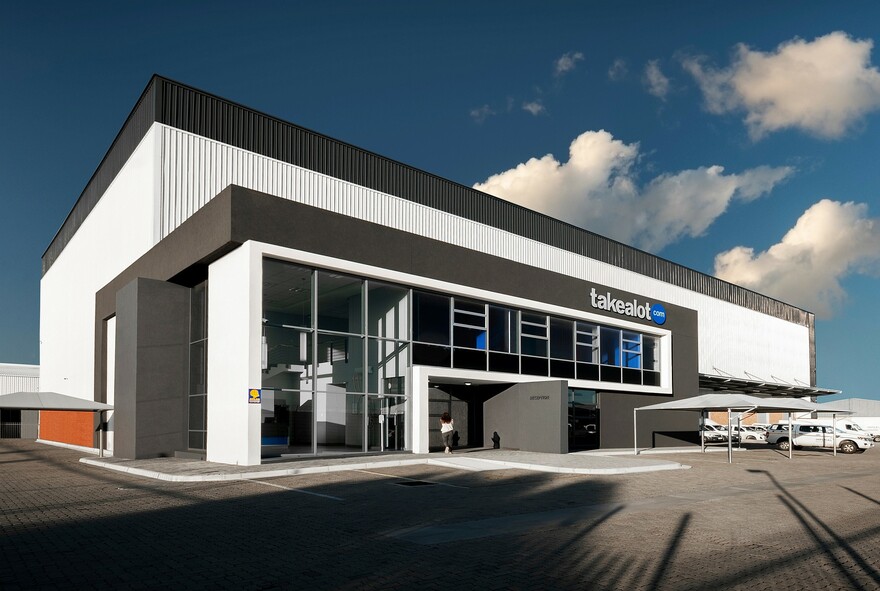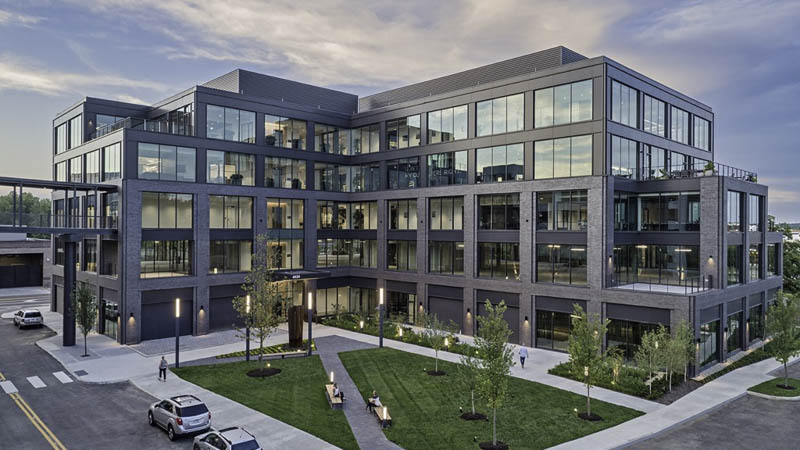Revealing the Comprehensive Solutions Given by Commercial Architects for Modern Advancement
Commercial Architects offer an important function in modern advancement tasks. They mix layout looks with performance while adhering to regulative requirements. Their competence expands beyond plain building, integrating lasting techniques and cutting-edge innovations. As they navigate intricate zoning laws, Architects work together with various stakeholders to bring visions to life. This diverse strategy elevates questions concerning the advancing duty of Architects in shaping modern rooms and the influence of their work with future developments.
Recognizing the Function of Commercial Architects in Modern Advancement
In modern urban landscapes, Commercial Architects play an essential function fit useful and aesthetic areas that fulfill diverse organization needs. Their proficiency expands past mere design; they navigate complicated zoning laws, developing codes, and environmental guidelines. By working together with clients, they recognize specific demands, ensuring that each task lines up with the client's vision while likewise taking into consideration practical elements such as sustainability and cost-effectiveness. Commercial Architects are adept at incorporating cutting-edge technologies and materials into their designs, enhancing both the capability and power efficiency of buildings. They perform detailed site analyses to analyze the prospective challenges and chances offered by a location. Furthermore, effective interaction with service providers and various other stakeholders is necessary, guaranteeing that the job proceeds smoothly from perception to conclusion. Eventually, Commercial Architects are crucial in creating spaces that not only accomplish sensible functions however also contribute to the overall personality and vibrancy of metropolitan settings.
Idea Style: Transforming Concepts Into Fact
Concept style serves as an important phase in Commercial design, where innovative style remedies emerge from creative brainstorming. This process counts on collaborative ideation, bringing together diverse perspectives to refine and boost preliminary principles. As ideas take shape, they change from abstract ideas right into tangible architectural truths.
Cutting-edge Layout Solutions
Transforming concepts right into truth is the trademark of ingenious design solutions in Commercial style. These remedies blend imagination with functionality, dealing with the special demands of modern-day growths. By leveraging sophisticated technologies and lasting practices, Architects craft areas that are not only visually attractive but also reliable and versatile. Focus on user experience drives the style procedure, making certain that atmospheres foster efficiency and cooperation. Each task take advantage of a tailored method, where principles are diligently developed to reflect the customer's vision while considering future trends. Innovative layout options likewise focus on flexibility, enabling modifications with time as organization demands advance. Inevitably, these techniques boost the total worth of Commercial areas, making them essential in today's affordable landscape.

Collective Ideation Refine
Partnership acts as the foundation of the ideation process in Commercial style, fostering imagination and advancement among varied stakeholders. Architects, clients, designers, and area participants take part in vibrant discussions, making sure that all perspectives are considered. This inclusive approach permits the exploration of different layout concepts, encouraging distinct services that line up with the task's vision. Via workshops and brainstorming sessions, concepts advance and refine, transforming first concepts right into concrete styles. Modern technology likewise plays a pivotal duty, with tools such as Structure Information Modeling (BIM) helping with real-time collaboration and adjustments. Inevitably, this joint ideation process not just boosts the style result yet additionally cultivates a feeling of possession and financial investment amongst all events entailed, causing successful Commercial advancements.
Zoning Evaluation: Navigating Regulations and Conformity
As designers start on brand-new tasks, comprehending zoning laws is important to ensuring conformity and avoiding expensive delays. Zoning analysis plays a vital function in this procedure, as it involves assessing neighborhood zoning regulations that determine land usage, building elevation, thickness, and troubles. Commercial Architects have the expertise to browse these complex regulations, helping customers identify acceptable uses and any kind of required variances.
Lasting Style Practices: Building for the Future
Lasting design practices are progressively essential in the domain name of Commercial architecture, particularly as ecological worries remain to intensify. Architects focus on eco-friendly materials, energy-efficient systems, and layout approaches that reduce waste and environmental impact. Including renewable energy resources, such as solar panels and wind turbines, permits buildings to generate their own power and lower reliance on fossil fuels.Furthermore, sustainable design highlights the value of interior environmental high quality. This consists of utilizing all-natural light, boosting air flow, and picking non-toxic materials to boost passenger health and productivity. Environment-friendly roof coverings and living walls are likewise prominent functions that add to biodiversity and metropolitan cooling.Additionally, Commercial Architects commonly incorporate water preservation strategies, like rainwater harvesting and drought-resistant landscaping. Through these innovative methods, they develop areas that not only fulfill modern needs however additionally cultivate a sustainable future, attending to the expanding demand for accountable growth in the contemporary globe.
Job Management: Ensuring Timely and Efficient Execution
Efficient job monitoring is vital for making sure that Commercial architecture jobs are completed on schedule and within budget. This role encompasses a range of duties, consisting of the control of different stakeholders, timelines, and sources. Commercial Architects utilize their knowledge to create detailed project plans that detail essential milestones and deliverables, permitting organized progress tracking.Regular communication among staff member and clients is important, cultivating openness and promoting prompt decision-making. Threat management methods are likewise used to recognize potential challenges early, making it possible for positive remedies to be developed. By making use of innovative job administration tools, Architects can keep an eye on job performance in real-time, making changes as needed to keep efficiency.
Interior Layout: Creating Functional and Visual Areas
Inside design plays a vital function in enhancing both performance and aesthetic appeal within Commercial rooms. Reliable area planning can maximize workflow and improve customer experience, while aesthetic layout concepts add to an aesthetically attractive setting - commercial architects. With each other, read review these components create rooms that are not only functional but also motivating
Room Preparation Efficiency
While making best use of the energy of offered area, Commercial Architects focus on space planning effectiveness to develop both functional and cosmetically pleasing settings. This strategy involves cautious evaluation of the spatial format to ensure perfect usage of every square foot. Architects consider variables such as process, availability, and all-natural light to boost functionality. By purposefully placing furnishings, tools, and workstations, they help with motion and interaction amongst customers, promoting productivity. Furthermore, zoning different areas for specific features aids in taking care of noise and privacy, creating an unified ambience. With reliable space preparation, Commercial Architects can change constraints right into chances, making sure that each area satisfies the varied demands of its owners while sticking to governing demands and industry requirements.
Visual Layout Concepts
Aesthetic layout principles play a crucial duty in shaping environments that are not only functional but additionally aesthetically appealing. These concepts direct Commercial Architects in creating rooms that reverberate with individuals while improving brand name identity. Trick elements consist of balance, percentage, and harmony, which collaborate to create a cohesive look. Shade plans and materials are thoroughly picked to stimulate preferred emotions and sustain the overall motif. In addition, lighting plays a crucial function, affecting mood and exposure while highlighting architectural features. By incorporating these principles, Architects guarantee that areas are not just functional but also welcoming and motivating. Eventually, reliable aesthetic design cultivates a positive customer experience, encouraging involvement and contentment in Commercial settings.
Collaboration With Stakeholders: Promoting Successful Collaborations
Successful partnerships in Commercial architecture joint on effective partnership with stakeholders, making sure that every voice is listened to and valued. This collaborative method entails engaging various celebrations, consisting of customers, contractors, and neighborhood members, throughout the layout and growth process. By fostering open interaction, Commercial Architects can address concerns, gather understandings, and align the project's vision with stakeholder expectations.The integration of varied viewpoints improves creative thinking and advancement, resulting in more practical and aesthetically pleasing designs. Normal meetings, feedback sessions, and workshops promote this dialogue, permitting Architects to adapt their plans in reaction to stakeholder input. Additionally, developing trust with transparency and responsibility strengthens these partnerships, causing a smoother job execution.Ultimately, the success of contemporary developments relies on the Architects' ability to browse and harmonize differing rate of interests, developing a collective atmosphere that advertises common objectives and common success.
Regularly Asked Concerns
How Do Commercial Architects Take Care Of Budget Plan Constraints During a Job?

What Sorts of Software Program Do Commercial Architects Generally Make Use Of?
Commercial Architects commonly make use of software program such as AutoCAD for drafting, Revit for Building Info Modeling, SketchUp for 3D modeling, and project management tools like Microsoft Project to boost cooperation and simplify workflows throughout the layout process.
Can Commercial Architects Assist With Getting Funding for Projects?
Commercial Architects can help in getting funding for tasks by preparing detailed proposals, helping to articulate read review style visions, and providing economic estimates that can enhance the probability of securing required funding from investors or banks.
Just How Do Architects Guarantee Safety And Security During the Building Refine?
Architects guarantee safety throughout construction by carrying out strenuous layout requirements, collaborating with engineers, carrying out routine site assessments, sticking to regional laws, and fostering communication among all stakeholders to alleviate threats and advertise a secure functioning atmosphere.
What Ongoing Support Do Architects Offer After Job Completion?
After task completion, Architects article source use ongoing support via upkeep consultations, efficiency assessments, and style alterations. They ensure structures fulfill progressing requirements, address prospective concerns, and preserve compliance with regulations, fostering a long-term relationship with customers.
Comments on “Why Businesses Invest in commercial architects to Scale Smart Developments”